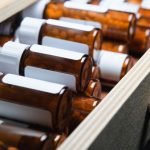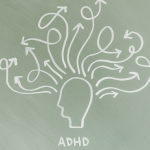Sildenafil Adjunctive Neoplastic Therapy
Sildenafil: Adjunctive Neoplastic Therapy
Jacob Schor, ND
The majority of cancer patients in our practice choose to combine standard medical treatment with naturopathic care. Thus, most of these patients will undergo some form of chemotherapy and/or radiation therapy. While they undergo these treatments, one of our primary goals as NDs is to make the cancer cells as sensitive to the chosen treatment as possible. On the standard list of supplements that do this are melatonin, vitamin D, green tea, quercetin, curcumin, ellagic acid, resveratrol and others. As a general rule, we should seek substances that either increase reactive oxygen species (ROS) or lower glutathione levels (GSH) in the cancer cells to make them more susceptible to either drug or radiation damage. There is a new addition, however: We now should seek to change nitric oxide levels (NO) before and during treatment.
This is a potentially amusing suggestion, as one way to increase NO is with the drug sildenafil, more commonly known as Viagra. While jokes about sildenafil are many, treating cancer is usually serious business, and the drugs used to treat it are no laughing matter. It is our responsibility to do everything we can when our patients undergo treatment to ensure that the treatment is as effective as possible. Take doxorubicin as an example.
Effect of Doxorubicin and NO
A 2004 in vitro study showed that the effect of doxorubicin could be increased by adding NO to the mix. Breast cancer cells exposed to NO 30 minutes before treatment were much more sensitive to doxorubicin. Doxorubicin treatment alone killed 60% of the cancer cells, but pre-treating the cells with NO and then treating with doxorubicin killed 95% of the cancer cells in the experiment (Evig et al., 2004).
Simultaneous treatment with both NO and doxorubicin produced only a slight increase in cancer kill over treatment with doxorubicin alone. Giving NO after doxorubicin produced no change.
In a variation of this experiment, 24-hour pretreatment of the cancer cells with a chemical that depletes glutathione further increased the effectiveness of the NO and doxorubicin treatment. This combination killed 100% of the cancer cells in the experiment.
One obvious concern regarding use of NO with doxorubicin is whether this regime will increase the drug’s toxic effect on healthy tissue. In this same study, the researchers ran healthy rat heart cells through the same protocols of NO pretreatment followed by doxorubicin. NO exposure did not increase the damage caused by doxorubicin on the healthy cells. A more recent study suggests pretreatment with sildenafil actually protects the heart cells from damage caused by chemotherapy (Das et al., 2005).
These results suggest that patients undergoing treatment with doxorubicin should look at two approaches to increasing the benefit.: 1) increase NO production prior to treatment; and 2) lower glutathione levels during treatment.
Use of NO in Treatment
NO produces a number of effects, including dilation of blood vessels. This action makes NO stimulation useful for a variety of applications, ranging from treating angina by increasing blood flow to the heart to treating erectile dysfunction (ED) by increasing blood flow to the penis.
As mentioned earlier, one way to increase NO is with a dose of sildenafil, and that is what some researchers in Virginia tried. Two studies published in 2005 report that pre-dosing mice with sildenafil prior to doxorubicin treatment decreased cardiotoxicity, while at the same time it increased the damage caused by doxorubicin to the cancer cells (Fisher et al., 2005; Das et al., 2005).
This same NO strategy is useful during radiation treatment. A 2002 study by researchers in Belgium showed that insulin increased the effect of radiation on tumor cells. This radiosensitization of the tumor cells was inhibited by an NO synthase inhibitor, so the researchers realized that this sensitization was due to NO stimulation (Jordan et al., 2002).The same researchers went on to publish another study in May 2004, which concluded that “…NO acts as an intrinsic radiosensitizer in vivo” (Jordan et al., 2004).
It is significant that the 2002 Belgium study found that insulin increases tumor cell sensitivity to radiation treatment, because it suggests that we should strive to increase patients’ insulin levels during radiation treatment. The obvious implication is that patients should eat before treatment. The other implication this suggests may sound sacrilegious for an ND to say. When I query cancer patients regarding their diet, many proudly inform me that they have “cut out all sugar and simple carbohydrates … because sugar feeds cancer.” If we take this insulin data seriously, we should encourage high sugar consumption for these patients during radiation therapy to keep their insulin levels elevated.
NO: A Radiation Enhancer
In September 2006, a group of Irish researchers reported that they “… previously achieved significant radiosensitization of tumor cells both in vitro and in vivo by using inducible nitric oxide synthase (iNOS) gene therapy to generate the potent radiosensitizer, nitric oxide” (McCarthy et al., 2006). In October 2006, a paper in Medical Hypotheses reported on using a combination of hyperbaric oxygen and NO donors to make malignant brain tumors more sensitive to radiation treatment. To generate NO in the brain, they used L-arginine and vitamin E (Al-Waili and Butler, 2006).
Not all news about NO looks good. High levels of nitric oxide synthase (NOS), the enzyme that makes NO, are associated with a worse prognosis for cervical cancer (Chen et al., 2005). And, high levels of iNOS increase the risk of breast cancer from radiation exposure sevenfold (Inano and Onoda, 2005, 2003). It seems the goal is to get more NO but without increasing the synthase enzyme that makes NO.
Sildenafil and PDE5 Inhibitors This brings us back to sildenafil. Sildenafil belongs to a class of drugs known as phosphodiesterase type 5 inhibitors (PDE5 inhibitors). These drugs slow the action of an enzyme that breaks down NO, thus increasing its apparent effect. They do not increase NOS.
Other drugs exist that are PDE inhibitors, last longer and may be more effective than sildenafil. For example, sildenafil has a half-life of four hours; tadalafil’s half-life is 17.5 hours.
Sildenafil is not the only way to increase NO production in the body. Taking the amino acid L-arginine achieves, over time, nearly the same result as sildenafil. The body converts L-arginine into NO. If there is more L-arginine around, the body makes more NO.
Thus, L-arginine has become the natural sildenafil. Several studies have tested L-arginine as a treatment for ED with varied results. Doses of 1500mg/day were not adequate (Klotz et al., 1999); however, doses of 5g/day apparently were (Chen et al., 1999). Better effect resulted when pycnogenol was taken with Larginine (Stanislavov and Nikolova, 2003). Another amino acid, citrulline, may also be useful (Maarsingh et al., 2006). Many of the NO products now sold combine L-arginine and citrulline in a four-to-one ratio.
Use of NO as Pretreatment to Chemo
The idea of using NO as a pretreatment to chemotherapy is new, and still weakly researched. The studies mentioned involve test tubes and mice, not people. In reviewing this article pre-publication, several colleagues expressed reservation about using L-arginine long term in cancer patients who were not undergoing chemo or radiation therapy. Their logic makes sense; L-arginine increases NO, which increases blood flow, and it is preferable that tumors get less rather than more blood flow. At this point, it seems prudent to not encourage NO production except during treatments. On the other hand, no warning label is attached to sildenafil bottles suggesting discontinuing use for those with cancer. At this point, I agree with this thought and only suggest using L-arginine and other NO enhancers shortly before and at the start of each chemo cycle or with radiation therapy, and continuing through the duration of treatment.
This sildenafil and NO approach is but one of numerous possible adjunctive treatments to consider when a patient contemplates standard oncology treatment. There are a growing number of ways to increase the benefit of both chemotherapy and radiation. The medical oncology community rarely considers these potential options. The more we talk about these adjunctive therapies, the more the public will ask for and expect them. Too often, people wait until finished with standard therapy before embarking on “alternative” therapy. This is a mistake, and we are obligated to popularize the notions of making chemo work better and making cancer cells more sensitive to radiation.
Jacob Schor, ND is a 1991 graduate of NCNM and has practiced in Denver for the past 14 years. He served as president of the Colorado Association of Naturopathic Physicians (CANP) from 1992 to 2000 and continues to serve as legislative chair for the organization. He is in practice with his wife Rena Bloom, ND, current CANP president, at the Denver Naturopathic Clinic. Contact: [email protected].
References
Evig CB et al: Endogenous production and exogenous exposure to nitric oxide augment doxorubicin cytotoxicity for breast cancer cells but not cardiac myoblasts, Nitric Oxide May;10(3):119-
29, 2004.
Das A et al: Phosphodiesterase-5 inhibitor sildenafil preconditions adult cardiac myocytes against necrosis and apoptosis. Essential role of nitric oxide signaling, J Biol Chem. Apr 1;280(13):12944-55, 2005.
Fisher PW et al: Phosphodiesterase-5 inhibition with sildenafil attenuates cardiomyocyte apoptosis and left ventricular dysfunction in a chronic model of doxorubicin cardiotoxicity, Circulation Apr 5;111(13):1601-10, 2005.
Jordan BF et al: Insulin increases the sensitivity of tumors to irradiation: involvement of an increase in tumor oxygenation mediated by a nitric oxide-dependent decrease of the tumor cells oxygen consumption, Cancer Res. Jun 15;62(12):3555-61, 2002.
Jordan BF et al: Nitric oxide as a radiosensitizer: evidence for an intrinsic role in addition to its effect on oxygen delivery and consumption, Int J Cancer May 1;109(5):768-73, 2004
McCarthy HO et al: WAF1-mediated transcriptional targeting of inducible nitric oxide synthase gene therapy sensitizes tumours to fractionated radiotherapy, Gene Ther. Sep 28, 2006.
Al-Waili NS and Butler GJ: A combination of radiotherapy, nitric oxide and a hyperoxygenation sensitizing protocol for brain malignant tumor treatment, Med Hypotheses Oct 25, 2006.
Chen HH et al: Increased expression of nitric oxide synthase and cyclooxygenase-2 is associated with poor survival in cervical cancer treated with radiotherapy, Int J Radiat Oncol Biol Phys Nov 15;63(4):1093-100, 2005.
Inano H and Onoda M: Nitric oxide produced by inducible nitric oxide synthase is associated with mammary tumorigenesis in irradiated rats, Nitric Oxide Feb;12(1):15-20, 2005
Inano H and Onoda M: Role of nitric oxide in radiation-induced initiation of mammary tumorigenesis in rats, Nitric Oxide Mar;8(2):144-8, 2003.
Klotz T et al: Effectiveness of oral L-arginine in first-line treatment of erectile dysfunction in a controlled crossover study, Urol Int 63(4):220-3, 1999.
Chen J et al: Effect of oral administration of high-dose nitric oxide donor L-arginine in men with organic erectile dysfunction: results of a double-blind, randomized, placebo-controlled study, BJU Int Feb;83(3):269-73, 1999.
Stanislavov R and Nikolova V: Treatment of erectile dysfunction with pycnogenol and L-arginine, J Sex Marital Ther May- Jun;29(3):207-13, 2003.
Maarsingh H et al: Role of the l-citrulline/L-arginine cycle in iNANC nerve-mediated nitric oxide production and airway smooth muscle relaxation in allergic asthma, Eur J Pharmacol Sep 28;546(1-3):171-6, 2006.








